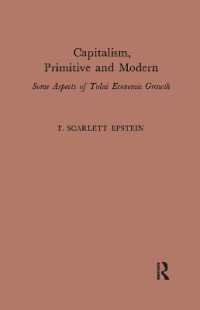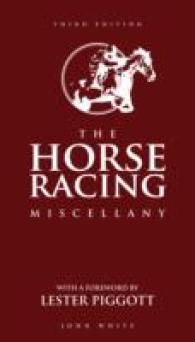- ホーム
- > 洋書
- > 英文書
- > Literary Criticism
Full Description
This volume is the first attempt to offer a panoramic historical overview of South Asian classical poetry, especially in Sanskrit. Many of the essays in this volume are the first serious studies of the great masterpieces of South Asian literature. Moreover, the book as a whole captures the millennium-long developmental logic of kavya literature by identifying a series of critical moments of breakthrough and innovation-that is, moments when the basic rules of composition and the aesthetic and poetic goals underwent dramatic change, allowing the tradition to reinvent itself. Individual sections thus focus on the beginnings of kavya literature and Kalidasa's creation of what came to be its classical form; the new poetic model that emerged from the intense competition and conversation of Bharavi and Magha in the middle of the first millennium; the extended revolutionary period in Kanauj, where Bana and his successors reconceived the meaning and practice of Sanskrit poetry; and the no less transformative period at the beginning of the second millennium, when poets of genius such as Sriharsa were active in the context of India's nascent vernacularization. The scope of the volume extends beyond Sanskrit to early modern Hindi, and beyond the subcontinent and the Himalayas to Java and Tibet, where kavya found a new home and continued to evolve. A general introduction proposes a theoretical framework for the study of this immense literary tradition in terms of its continuous self-reinvention.
Contents
I. KALIDASA AND EARLY CLASSICISM; II. THE DEVELOPING MAHAKAVYA; III. THE MASTERS OF PROSE; IV. THE SONS OF BANA; V. POETS OF THE NEW MILLENNIUM; VI. REGIONAL KAVYAS








